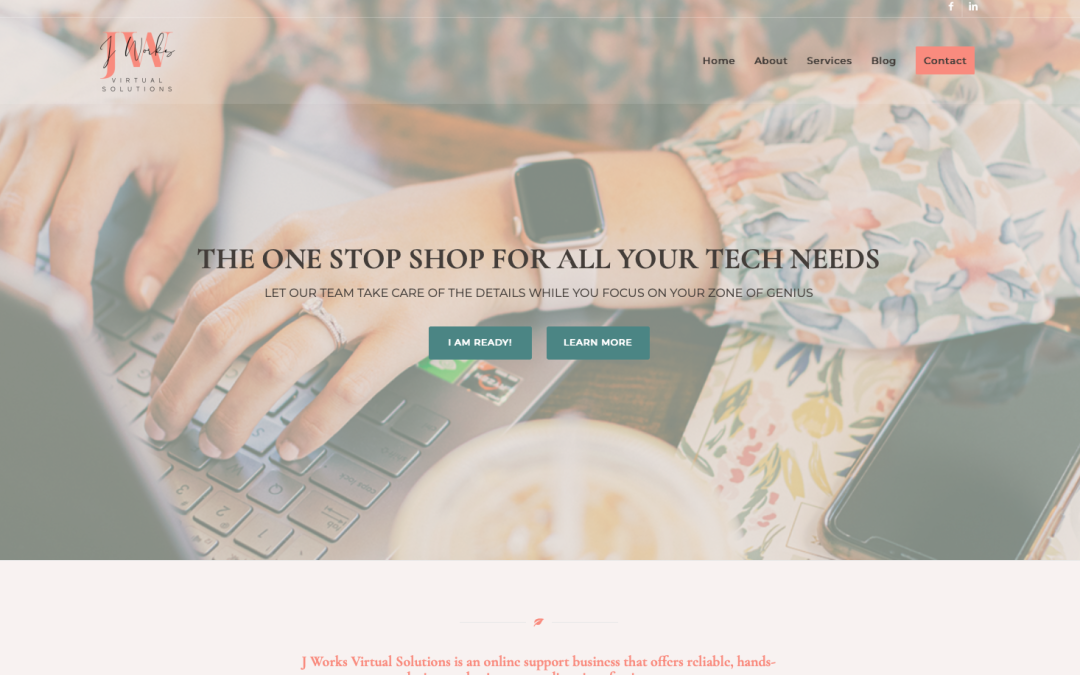
by Steve Waddell | Aug 26, 2022 | Profiles Of Success, Web Design
Today we are highlighting Fabrizzia Kaso, a web design professional who earned her Remote Working Professional certification and is working on completing her Web Design certification with the Web Professionals Global Organization. She designed the website for J Works Virtual Solutions, an online support business that offers reliable, hands-on solutions to businesses needing time-freeing support. Jenna Moser, the CEO and founder of J Works Virtual Solutions, hired Fabrizzia to design a website that would increase the online presence of the business.
We caught up with Fabrizzia to hear about her experience on this project and what life is like as a web designer.
What was your experience like working with this client?
When I first met Jenna she was very nice and wonderful to work with, and I could tell she was passionate about her business. During the process of our work relationship, Jenna was efficient in her response time. She helped bring the project along, delivering all the essential pieces to build a beautiful website. We have valued each other from the beginning, which made it easy for me to start such a fun project with her. I love being able to build relationships that can last a lifetime. I’m glad I had the opportunity to meet Jenna and work with her on her website. She is a true professional, and I know she will succeed in whatever she does.
How did your coursework from Web Professionals Global prepare you for this project?
The course and mentorship provided the foundation for me to understand the basics of how to start a website and work on real-world projects. Today, I am able to build websites from scratch. This starts with brand personality, brand pictures and layout, and includes much more as the process develops. The coursework also taught me the importance of working with others and building a team to draw on the strengths of my professional colleagues.
As you add this project to your portfolio, what did you learn from it that you can apply to future projects?
I learned that I need to be well prepared to start a project. Organizing project finances is important, but it is equally important to have processes and systems in place to ensure the client knows exactly what he or she needs to provide prior to starting the project.
How has this project built your confidence now that you know you can build a website on your own?
It has helped tremendously and I couldn’t be happier with the results. What I liked most was the freedom I had to develop the website from scratch. I based the website on the client’s personality, company values and services. You have to give 100% to every client and honor their trust in you. This is especially important to remember when you are starting out. I see the result of my hard work in the requests from potential new clients to build their websites. I am excited to be able to take on future clients and create beautiful and meaningful relationships along the way.
What would you tell others thinking of starting a career in web design?
I would say that website design is more than just building the site. It is 50% creativity and imagination, 20% strategy, 20% content, and just 10% is the actual website layout. It is much more involved than most people think. Creating a website can be a very rewarding experience. It’s a chance to be creative and use imagination to build something people will see and interact with. But it’s also much more than just making the site. You need to be strategic about how you want people to use your site and what kind of content you’d like to include. And, of course, you need to build the site itself! If you’re feeling excited about creating a website, then it’s probably something you’ll enjoy doing. And who knows—you might even make a career out of it!
Now that you have completed the project, what advice would have been helpful at the start of the project?
Being professional and strategic when working with clients allows you to set yourself up for success and avoid unnecessary delays or cancellations. To prevent this, it is vital to be clear and concise when onboarding a new client. I learned how important it is to have a checklist of needed items and action steps for clients to complete before I start a project. This allows me and the client to be fully prepared for what is necessary for the project to begin. Taking care of this information can minimize the project time to avoid extra hassle. Clear and effective communication is essential for any successful project.
What would you tell others to keep in mind when beginning work with a client?
Professionalism and strategy are two crucial factors to success when working with clients. I recommend setting clear expectations from the very beginning. This will help set the tone for a professional relationship and ensure that both parties are on the same page from day one. Furthermore, being comfortable communicating with the client is crucial. This way, the client will always be updated on the project’s status and will not be caught off guard by any surprises. Finally, maintaining regular communication will build trust and credibility with the client, which are both essential for a successful working relationship.
What do you love about web design?
I love the creativity and functionality behind a well-designed website. Surprisingly, I also enjoyed the copywriting and blog writing aspect. The possibilities and designs are endless when designing a website.
What do you enjoy about working with your clients?
I enjoy sharing my professional worth ethic and values, working with them closely, and creating a bigger impact by establishing a strong client relationship.
Do you have a particular focus for your business?
I focus on discovering brand personality and creating engaging messaging for each of my clients.
What does it feel like when you hand the “keys” over to your client for their brand new website?
It feels like you are rewarding the client with an Oscar or Grammy. The best part is when you see the smile on his or her face. That is the true fulfillment for me.
Connect With Us
Have you wondered what it is like to work as a web designer? Contact us today to chat about our web design certifications as well as all the other certifications we offer. We would be happy to talk with you about how we can help you reach your professional goals.

by Steve Waddell | Jul 11, 2022 | Web Accessibility, Web Conference, Web Design, Web Development, web standards, WOW News
Our organization was proud to help facilitate the web design contest at the national SkillsUSA competition in Atlanta, GA from June 19-24, 2022. Our team arrived on Sunday, set up Monday and Tuesday, and ran the high school competition on Wednesday and post-secondary competition on Thursday. We also organized a Thursday evening debrief and meet and greet with industry professionals and participated in the overall awards ceremony on Friday evening. We would like to thank all our team members for using their vacation time to support SkillsUSA and the web design contest.
This year, the web design contest teams were greeted with messages in Spanish, German, Chinese, French and Arabic from our international members. One of the benefits of our organization is that our community is made up of members from all over the world, and our international experience and membership helps to craft the real-world challenges that our competition delivers. We are about helping to create and support whole professionals ready to work both domestically and internationally—especially in this age of remote work.
The Contest
The competition was held at the Georgia World Congress Center, and the competitors were teams of two from different states in the country. The teams were tasked with creating websites for clients, all while completing specific tasks in the process to demonstrate web design proficiency.
We were able to utilize the online technologies we developed in 2020 and 2021 when we ran the contest fully online due to COVID-19. This design allowed all competitors on-site to participate—whether they had a laptop, PC, Mac, or Chromebook. All tools were available online and were the same for each of the teams. This meant the teams could focus on listening to and meeting the client’s needs, fundamentals and creativity to win the day. Our new system allowed us to judge all the competitors’ work online, which improved the efficiency of judging the final products that the teams designed.
It should be pointed out that this competition is far more than just a competitive challenge. We at Web Professionals Global, which started the competition in 2004, brought our mission of “Community, Education and Certification” to the competition. Our community of professionals developed the competition challenges and judged the work of each team. We also provided training before the event to help give the competitors the chance to learn about trends in the industry and more about what it takes to be competitive in this in-demand and high-paying career pathway.
Just like in the real-world, each team met with the client whom they were building the website for. This provided the competitors with a real-world environment to get a taste of what it is like to work as a web design professional. After the event, we held a Q&A event with the web design professionals who had been part of the judging team. This was an opportunity for the teams to hear from professional web designers about personal experiences, how to get started, the ups and downs of the career pathway, day-to-day experiences on the job, and how to set themselves apart and on the path of success.
To learn more about Web Professionals Global or the SkillsUSA competition, contact us today. We would love to chat with you.

Jonathan, the client, holding a meeting with all of the competitors Wednesday morning at the beginning of the event.

David Jackson and Bryce Hickson, web designers and lead judges, speaking to the high school and post-secondary competitors in the competition debrief on Thursday.

The competitors chatting with David and Bryce after the debrief.

Mark DuBois, Executive Director, Web Professionals Global, handing out awards at the ceremony on Friday night.
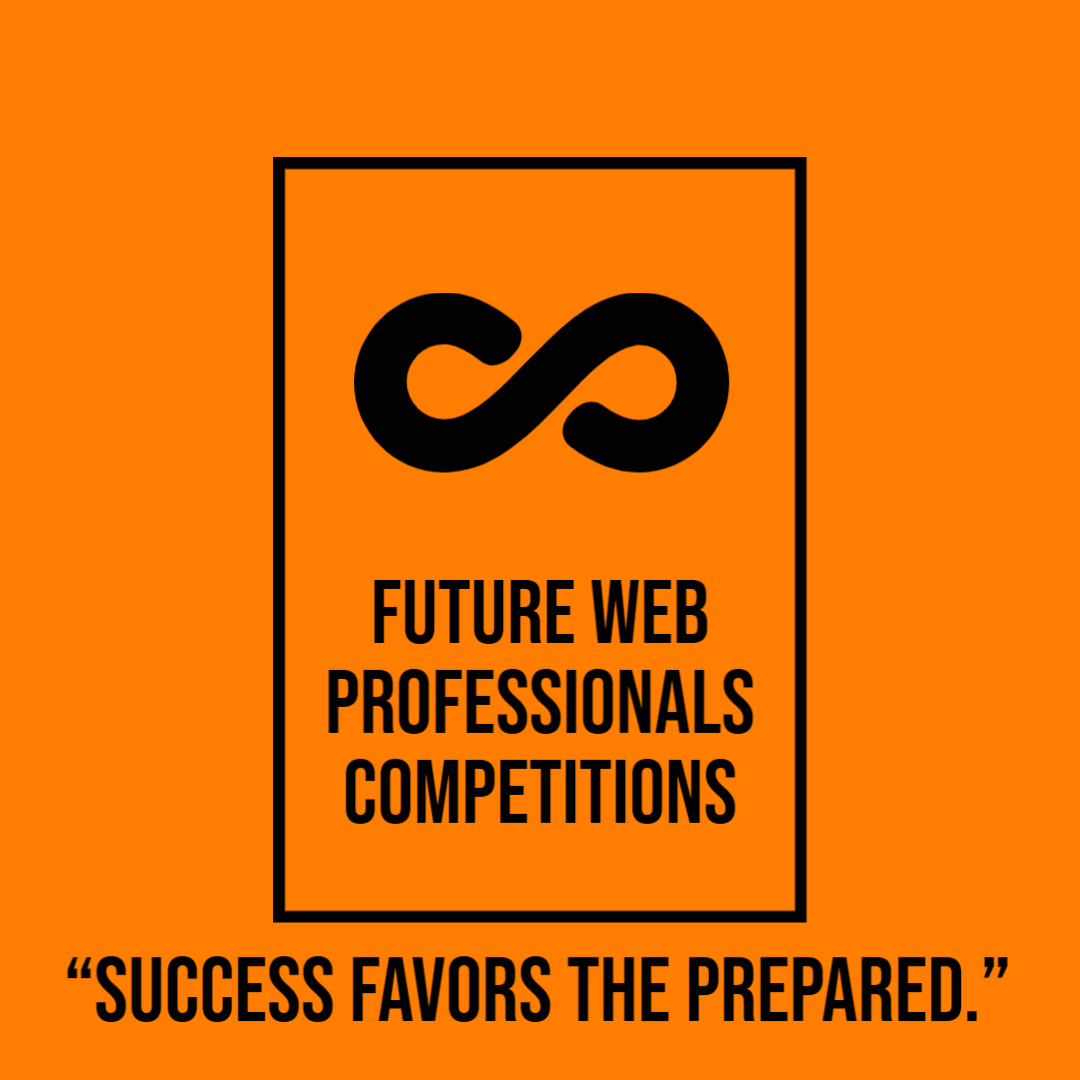
by Steve Waddell | Apr 5, 2022 | Uncategorized, Web Conference, Web Design
Over the past 25 years, we have been working hand in hand with education as we push forward our mission to support web professionals with education, community, and certification. Over the years, funding requirements for career and technical education have shifted. We know that we need to do what we can to help administrators meet the funding requirements so they can continue to provide the tools teachers need to upskill students, open up career pathways, and ensure students’ career readiness for high-skill, high-wage, in-demand occupations.
As part of our mission to engage the next generation of professionals, we partnered with SkillsUSA in 2004 and started the National Web Design and Development Competitive Event. Our event team has run this competition ever since, and did not even skip a beat during COVID-19. We have learned so much over these years about how to blend industry expectations with secondary and post-secondary learners.
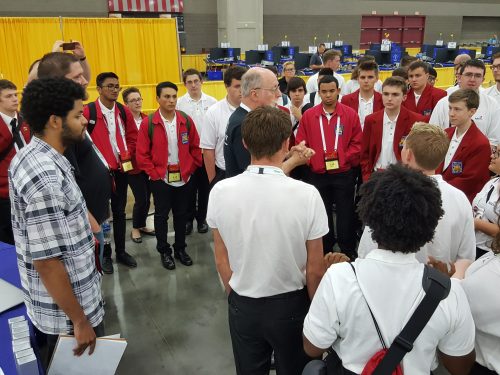
Our industry team that runs the SkillsUSA event also has experience developing and running international competitions in artificial intelligence, robotics and game development. It is this wealth of experience that brings us to where we are today and our announcement for a new competition.
In this article we will discuss:
- Our history of successfully running web competitions
- The creation of a new competition model
- The three competition variations
- The career pathway trinity of curriculum, certification, and competition
- How the competitions will develop the next generation of students/future web professionals
Background
We have had teachers asking us to run more competitions for years. While we have always been willing, we knew we had to do it in a way that could scale easily and enable students anywhere in the world to not only compete but also to learn. Otherwise, we would not be meeting our core mission.
Behind the scenes, we have been testing a new virtual competition model. This model will allow us to provide an international industry competition for secondary education students. All our testing has shown us that we have a viable competition system ready to go. Creating this virtual competition also allows us to push forward the message of how people with disabilities or specific conditions that might make other careers difficult are not a limitation in the broad and welcoming world of web professional careers.
During the first year of the COVID-19 pandemic, we were one of only two competitive teams who ran their SkillsUSA National Competition. We were not going to let COVID break our perfect record of running our part of the SkillsUSA competitive events. Admittedly, we were not allowed to run the event as an official SkillsUSA competition. We had already taken steps to simulate a web environment at Skills, so we simply took some of that experience and ran our web design competition virtually in 2020 for SkillsUSA programs who wanted to take part in the web design event in an unofficial capacity.
One teacher who recently ran a competition had this to say about the experience: “If they want a great experience, they should use this program for running the competition. Anyone who is even remotely knowledgeable in using a computer can get the students on and running in the event. Most of it is hands-off for the advisor and the students do the bulk of the work. The user experience was great from a student’s perspective. I was very happy to find out that we were getting to have a professional experience in the web design category that was going to challenge my students and provide all of the necessary online materials for the competition. Thank you for making this event possible first and foremost. Without Web Professionals Org and their team, we wouldn’t have had a web design event in Mississippi.”
It is through this experience we realized that many schools have situations where it is not feasible to compete in a standard career and technical student organization (CTSO) event, yet they need to compete in a national event to meet some of their funding requirements. As the international professional industry organization we have the real-world experience and technical expertise to deliver competitions that are equitable, accessible and simple for educators to implement. We see the need and we can fill the need.
Overview of the New Competition
We are proud to announce that the Web Professionals Organization will be running the following Future Web Professionals competitions virtually beginning in the 22/23 school year for the benefit of US-based and international career and technical education partner programs.
The motto of the Future Web Professionals competition is “Success Favors the Prepared.” We feel this fits with what we want our educators as well as future and current professional members to always remember. Lifelong learners are always striving to be prepared. Let’s face it—industry leaders are always better prepared. We see this as the next stage in supporting creating the next generation of industry professionals.
In talking to our secondary educators, we found that many of them see a group of three areas that their learners are most attracted to.
- Web design is a first obvious pick as it is the in-demand and high-paying career most people think of when they hear the words “web professional.” And they are right—as the U.S. Department of Labor cites the profession as one of the most high-demand, high-skill and high-paying.
- Web animation is a bit more subtle of a choice and may not be as obvious. As companies look to market and brand themselves, they are always seeking to visually engage their target audiences with new innovative messaging on websites and social media. Web animation is one of the most important tools web professionals can use to help their clients propel their stories with or without dialogue. This career path has a ton of opportunities in web marketing, media and entertainment industries.
- Web game design is another pathway that attracts audiences and enables them to experience a company’s brand and story. Web games can attract new audiences to a website and allow new markets to discover brands organically through social media platforms. The game design pathway also teaches the value of interactivity in engagement. Today, 50% of all video gaming revenue comes from games played on mobile devices and 30% of mobile gamers are over 45 years old. Web game development is all about combining story, graphics, and choice into playable experiences. We also find that experience in developing web-based games helps strengthen a designer’s overall skill set.

We will issue awards to top-performing future designers as well as acknowledge schools nationally for their work in preparing future professionals. The competitions will run so that both fall and spring semester learners can participate.
Preparation—Curriculum, Certification, and Competition
We are a non-profit industry organization with a 25-year history of working not only with industry, but also with education and workforce. We have seen what it takes to prepare individuals for high-skill, high-wage, in-demand occupations. A competition alone is not the way. We know it takes a village to raise a child, and it takes a similar approach to raise a professional.
Each of these competitions is part of what we see as the career pathway trinity or what we refer to internally as the 3Cs: Curriculum, Certification, and Competition.
- Curriculum: We create the foundation for your students to learn through a media-rich, real-world and project-based approach. This is not about simply learning coding skills, but engaging in the concepts, hard and soft skills that we know are important as professionals. This creates the whole learner who becomes a whole professional.
- Certification: The curriculum prepares the students to earn international industry-recognized certifications. However, our model of certification represents far more than passing an exam—our certification represents the whole learner. The whole future professional. Students are acknowledged for completing a career readiness body of work. They express their development through their college and career-ready portfolios with real-world examples of their creativity, problem-solving, and soft and technical skills. The capstone in each learner’s portfolio is the student’s ethics in the workplace micro-credential and their international industry-recognized certification. Their portfolio is portable and becomes a testament to career preparation success and a confidence-boosting career-affirming expression of each future professional.
- Competition: Finally, we offer the learners the opportunity to compete and test their skills on an international stage. As a professional organization, we are naturally global in scope. We are US-based, and we work to support professionals domestic and international. The international context of the competition reminds learners that they are part of a global community. In the future, they may work for international companies or have international team members—and they are always in competition on a global scale. Regardless of how well students do in the competition, they learn valuable skills in meeting project expectations and having their work stand with the work of those around the U.S. and the rest of the globe.
Helping you meet Carl Perkins funding requirements
For years we have heard from administrators, department chairs, and countless educators about the struggles they have trying to balance the needs of their learners and the demands of Carl Perkins funding. For larger districts with more administrative support this may not be a pressing issue—however, this can be a daunting task for rural, urban and small districts. We believe we are making it easier for all educators to get their funding by taking advantage of our curriculum, certification, and competition approach. If you want to talk with us, reach out to us at Steve@4WebPro.org.
We are excited to offer this opportunity to CTE educators. We know that by adding this component to a CTE program we can help schools fulfill their Carl Perkins funding requirements more easily. We understand the frustration administrators feel and are doing what we can to make it a bit easier. We also see this as an opportunity for us to meet our mission and help welcome the future generation of web professionals, some of whom will eventually take our places here at their Web Professionals Organization and do their part for the future.
One more note
As of the 22/23 school year, we will only offer this competition for our secondary partners. However, our post-secondary partners are already asking when it will be available to them. We promise that we are serious about bringing the competition to post-secondary and our workforce partners, but for now we ask them to remain patient. Please reach out to us today with any questions about this exciting new model.
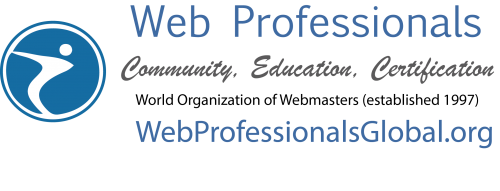
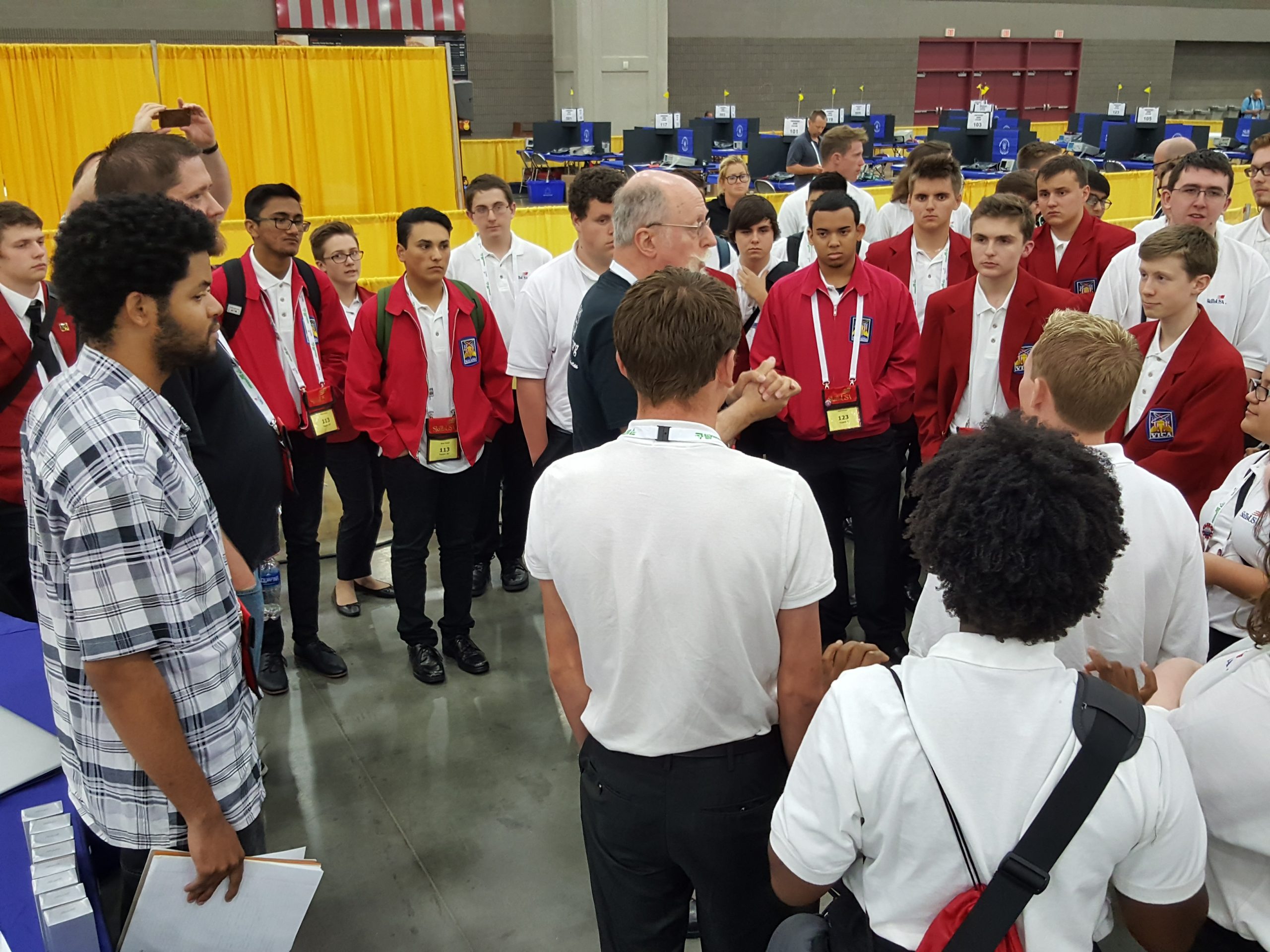
by Steve Waddell | Jan 20, 2022 | Web Conference, Web Design, Web Pro Education, WOW News
The Web Professionals Organization is proud to announce a new and streamlined model for states to deploy SkillsUSA Web Design and Development competitions in 2022.
Building on over 20 years of experience running competitions, including the last two years of competitions run 100% virtually due to the COVID-19 pandemic, the Web Professionals
Organization has improved the process for administering competitions at the state level. This refreshed competition model is the most accessible it has ever been, enabling students to focus on creating innovative projects and equipping facilitators to run the competition seamlessly. Students only need a PC, Mac or Chromebook and an internet connection to participate in the competitions—giving those in rural, urban and suburban areas equal access.
Competitions can be run entirely online, which levels the playing field for students across the country in the age of COVID-19. This new competition model is future-proof and will be able to be implemented for years to come, no matter what the pandemic looks like in coming years. Competitions are run for free, and the model makes the judging process more standardized and easier than ever before. States can run competitions whenever they want throughout 2022.
Not only does our new approach make it easier for any state to run their own web design and development competition, but it also ensures that every state is conducting their own competition that models the expectations the competitors will need to meet at the national competition. This gives every state—from small to large—the same turnkey resources to ensure a successful competition. This model is intended to only be used for the current cycle of SkillsUSA competitions.
Highlights of this new model include:
- Competition project with all graphic and textual assets that are similar in scope and style to what the competitors will experience at the national competition.
- Competitor coding validator (a simple app) that will automatically check a team’s project and give your judging team a report outlining the quality of coding. This tool does in just minutes what would take a person one hour, dramatically cutting down on judging time.
- Easy-to-apply rubrics help both new and veteran judges quickly evaluate team projects for creativity, design and best practices.
- Web-based coding editor and folder system allows judges to easily review any state competitor submissions. Judges can review work with just an internet connection, allowing states to have judges join virtually from anywhere.
- Web-based editor and site storage means your events committee does not have to worry that any competitor’s work can be lost or misplaced—all of it remains safe on the web.
- Judging preparation materials and training videos are included to make it easy for new judges to quickly get up to speed and be able to deliver consistent judging.
- Optional competition kickoff and welcome video delivers a consistent message to all competitors as well as some helpful hints about the competition project.
- Technical back up and support provided by the Web Professionals Organization.
- Fast and easy sign-up for state SkillsUSA leadership teams to reserve their free competition kit and web-based tools suite.
Because of these new systems the Web Professionals Organization is implementing for this year, any state can run a turnkey competition and give students an opportunity to build
meaningful projects in an engaging online environment. All of this is provided free of charge to any state wishing to have an organized and impactful state-level web design and development competition to prepare their students well for the national competition.

by Steve Waddell | Apr 15, 2021 | Job and Resume Tips from the Pros, User Experience, Web Design, Web Development
People often think that web development and web design is an industry that is only for young people. Many start-ups and tech companies are run by people in their 20s and 30s, so this is a common belief. However, there will always be a need for web developers and designers by companies across a wide variety of industries. If you have the skills and determination, companies will give you a serious look—no matter how old you are. Companies often don’t care about what you have done in the past, so you can learn web development and show companies that you can help them meet their goals—even if you are switching from a completely different industry. If you are in your 40s, 50s or older and thinking about taking the plunge in learning web development or design, here are some tips to keep in mind during the process:
Identify Your “Why”
If you can identify why you want to learn web development or design skills, and have a goal in mind, you will be much more likely to be successful. Perhaps you are a lifelong learner and want to dive into a completely new field. Maybe you feel like learning web development or design will help you perform your current job better. Maybe your company has open positions for web developers and designers, and you feel like you would be a good fit if you had the skills. Or maybe you would like to begin freelancing for companies for side income and have realized that these are an in-demand skill companies are always seeking.
Get Started
A web developer works on the structure of websites and is responsible for coding more of the back-end (server side) of the site. A web designer works more on the front-end (client side), creating the look and feel of the site and taking the client’s product or service to the web. Web developers are engineers and mechanics, while web designers are architects and storytellers.
Find a program that teaches the programming languages you are interested in. If you are new to coding, then starting with the front-end of web development like HTML5, CSS3 and JavaScript is the perfect way to ease yourself into the industry. Both web developers and designers need to know these languages first and foremost. This makes front-end development the best place to start, as you can see on the screen in real-time how your coding is performing. After mastering the front-end, you can explore the back-end of development too.
There are a ton of resources available online for those interested in learning web development skills. Some online coding classes allow you to learn at your own pace, while others allow you to learn with an instructor alongside other students in a “bootcamp” model. If you learn better in an in-person setting, your local community college may offer courses either as part of a credit degree program or through their continuing education departments.
Some programs of study may encourage you to quit your current job to be able to attend the program. If this is the case, you may elect to take an online program that will give you more flexibility to learn at your own pace, anytime and anywhere.
When selecting a program, make sure you will earn an industry-recognized certification at the end of it. A simple course certificate doesn’t hold much weight, but a certification that is backed by industry professionals will be much more credible to companies seeking to hire developers and designers. And be careful of expensive bootcamps—some are worth it, while others are not. Put simply, you need to want to put in the work to become a developer or designer. If you just go through the motions of learning, you will not come across as skilled and confident when interviewing with companies. Accomplished developers and designers have a passion for coding and continuing to learn and hone their skills over their careers.
Find Help When Needed
If you enroll in a web development or design bootcamp or local community college class, you will have built-in support with a teacher and your colleagues. However, learning web development individually at your own pace can be difficult. Try to find people around you or online whom you can bounce questions off of and seek guidance from. This could be a family member or friend who is a software engineer, or it could be someone else who has completed the course you are enrolled in. Having a mentor can make the learning process much easier and spur you to continue on for the times when you are feeling defeated.
Ways to Stand Out
When you start as a web designer (and later think about web development), it is important to remember there are many who are also aspiring. How do you stand out in the field? One approach is to learn more about web accessibility (making web pages accessible for those who use assistive devices). Another area you could consider is learning how to make web pages more easily found and indexed by search engines. Perhaps you want to check out schools and curricula which focus on these topics?
You may also be asked to show a portfolio of your work. Obviously, you will have examples from the classes you take. However, you may also want to offer your help to not-for-profit organizations. While you may not be paid for your help, you will gain significant experience in working with actual clients. Also, you can always ask the organization for a letter of reference (once you have successfully completed your project). We encourage you to think about ways to differentiate yourself from others. What can you do better than most? Leverage that as you learn web design and development.
Have Fun
The world of web development and design is an exciting one. Developers and designers work to make the apps, websites and games we rely on every day function as they should. They often get to work on cool projects that are at the cutting-edge of how we work and play on the internet, and you can be a part of that.
There’s a reason web developers and designers get paid well—it isn’t always easy to learn and do well. However, with a willingness to learn, determination and support system, it’s never too late to dive in. Whatever path you take, developer or designer, our Web Professionals organization looks forward to welcoming you to our community.

by Steve Waddell | Aug 20, 2020 | Web Design, Web Development
Steve Waddell
Director of Education and Training
You may have heard the term “brutalism” before—most likely referring to the architectural style that emerged in the 1950’s following the end of World War II. A recent trend has emerged in web design and development that takes inspiration from this architectural style, pictured on the right, that features simple geometric designs. Let’s take a look at what brutalism means in web design and development.

Think about the websites you enjoy visiting. They may feature bright colors, pictures and videos that draw you in and keep you engaged. Although fancy websites are popular, the brutalist style of no-frills websites has made a comeback. Brutalist websites are a throwback to the early days of the internet when websites were very basic in style. With a raw and bare-bones look, brutalist websites are functional and easy to navigate. You most likely have already visited brutalist websites and just didn’t know it. For example, let’s look at the Craigslist homepage:

Notice how there are no pictures, videos, or distracting colors. Everything is laid out very simply, making it easy to get the information you are looking for and navigate to the page you want.

The Wikipedia homepage features another brutalist design:
Notice the similarities between the two. Both websites feature black text and blue hyperlinks on top of white backgrounds. They are very easy to navigate—you aren’t likely to get lost and you won’t be distracted by any pictures or videos. Brutalist websites aren’t the most technically challenging websites to design, but they deliver a very effective user experience. Other popular and successful brutalist websites include the news site Bloomberg and nonprofit network Freecycle.
With the rise of WordPress, the brutalist trend may have hitched a ride—just think about how stark the early standard templates are for WordPress sites. The popularity of blogs also may have contributed to some of the brutalist appeal. See an example of a WordPress site below.

The next time you are designing or developing a website, consider paying respect to the early days of the internet by creating a brutalist-themed website. It’s a good way to stand out from the “same-ness” of the loud and complicated websites that we see today. It can grab the attention of your visitors and make as much of a statement as you would with a more elegant website design, making sure they remember your website as different from others.
Read more about brutalist web design and development
















